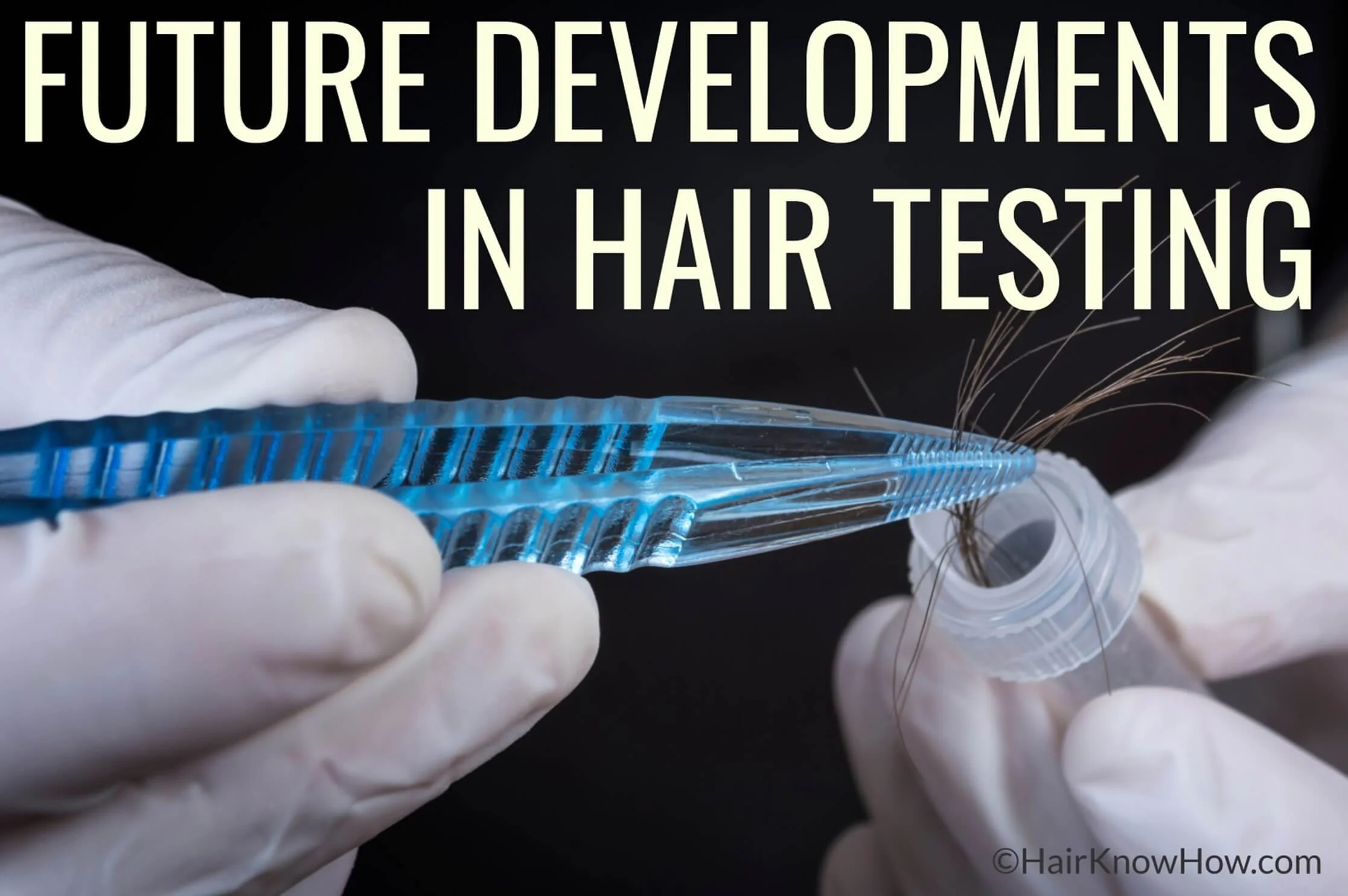Advancements in Personal Hair Testing
Detecting drug and alcohol use, mineral deficiency, hair health issues, and other medical conditions requires hair testing.
But as science and technology continue to develop, so does hair testing, which is now more accurate, efficient, and widely accessible.
The most recent advancements in hair testing technology will be looked at in this article and their impact on the hair testing sector.
New Hair Testing Technology
One of the most exciting areas of development in the field is the emergence of new hair testing technologies. Advances have been made relating to gas chromatography-mass spectrometry (GC-MS), and liquid chromatography-mass spectrometry (LC-MS), which provide will help provide greater sensitivity and accuracy than traditional hair testing methods.
Advances in non-destructive hair analysis using Raman spectroscopy and infrared spectroscopy assays have been reported, these techniques allow hair samples to be examined repeatedly without losing their integrity, enabling more effective hair sample testing and storage.
Through the use of methods like Scanning Electron Microscopy (SEM) and Transmission Electron Microscopy (TEM), these technologies and how they are used have enabled hair scientists to see inside hair fibres to directly image the cortex. These technologies allow for a thorough health assessment to be carried out thanks to advancements in SEM that now allow for highly detailed and unmatched evaluation of a hair’s cuticle and cortex to be analysed. These evaluation techniques can be accessed through either HairKnowHow’s Complete Hair Analysis or our Hair Porosity Analysis Test.
Innovations in Hair Testing
A wider variety of drug classes and other substances can now be tested thanks to advancements in hair testing. For instance, synthetic cannabinoids, frequently found in "spice" drugs, can now be found using hair testing.
The ability to test for drugs like fentanyl and carfentanil, which have become more common in the opioid epidemic, is another benefit of new technologies.
Hair Testing Advancements
It is now possible to identify medical conditions and nutrient deficiencies earlier, more precisely. Heavy metals like lead can now be detected in hair samples, which may indicate exposure to toxins from the environment.
Additionally, hair testing can now identify mineral deficiencies like iron deficiency anaemia, which, if untreated, can result in serious health issues.
Future Hair Testing Methods
Artificial intelligence (AI) and machine learning are among the most exciting new developments in hair testing.
These technologies are being used to analyse hair samples more quickly and accurately and to spot patterns and trends that would be challenging for human analysts to pick up on.
Personalised hair testing techniques are being developed, which can account for a person's genetic makeup and medical background to provide more accurate results that advance well-being and personalised health care. This has only been made possible due to the latest advances in Hair care science and KnowHow.
Extensive hair analysis is only now possible using the array of tests developed by HairKnowHow that allow detailed personal hair regimes, care plans, and products to be prescribed based on individual hair care needs and goals.
Hair Testing and Artificial Intelligence
The use of AI and machine learning to analyse hair samples more quickly and accurately is another area of advancement in hair testing. The patterns and trends hidden within the data obtained from hair samples that would be challenging for human analysts to spot can be found using these technologies.
Personalised hair testing techniques that consider a person's genetic makeup and medical history to produce more accurate results can also be developed using AI and machine learning.
Hair Testing and Genetic Research
As scientists figure out new ways to extract genetic data from hair samples, hair testing is becoming more closely related to genetic research.
This information can be used to identify genetic predispositions to specific diseases and to understand a person's medical history better.
Hair samples could also be used to examine population-level genetic trends, which could have significant health implications.
Hair Testing and Personalised Medicine
Hair testing is becoming more important in personalised medicine as genetic research, and other types of hair testing develop.
Hair testing can reveal vital genetic and physical hair data that can be used to create patient-specific treatment plans, resulting in more effective and efficient healthcare.
In the developing field of personalised medicine, patients' individualised treatment plans could be made using genetic and primary hair care data.
Pharmacogenetics and hair testing
Pharmacogenetics is a field that investigates how a person's response to medication can be affected by genetic factors. Hair testing could be used to offer important genetic data that can be employed to comprehend how a person's genetics may interact with pharmaceuticals or how taking particular medications in combination with genetic variations affects health outcomes.
Precision medicine and hair testing
In the developing field of precision medicine, patients' individualised treatment plans are created using genetic data from direct physiochemical analysis.
Future hair testing could reveal vital physical and genetic data that can be used to develop patient-specific treatment plans, resulting in more effective and efficient healthcare.
Hair testing can also help identify possible drug interactions and side effects for some medications, enabling more accurate dosing and treatment.
Telemedicine and hair testing
Technology is used in telemedicine to provide medical services remotely. Hair testing could be significant in telemedicine because it allows for remote access to accurate and trustworthy diagnostic data. This enables people who live in remote or underserved areas to receive the same level of care as people who live in more urban areas, which can be especially helpful for them.
Big Data and hair testing
The gathering and examination of massive amounts of data is known as big data. Analysing the data generated by hair testing can reveal patterns and trends. This information can be used to find new applications for hair testing and increase the precision and effectiveness of hair testing or the medicines etc, being used by the tester.
Big data can also be used to create new algorithms for real-time analysis of hair samples, yielding quicker or more accurate results.
Blockchain technology and hair testing
Data storage using blockchain technology is safe and decentralised. Blockchain technology could store the information obtained from hair testing, giving a secure and impenetrable record of the outcomes. This is particularly helpful in legal and workplace drug testing situations where the accuracy and data storage of the test results is essential.
Hair Testing and Machine Learning
AI that uses machine learning enables systems to learn from their past performance and advance. Hair testing generates a lot of data, and machine learning could be used to analyse it and find patterns and trends that would be hard for human analysts to detect. Additionally, new algorithms can be created using machine learning to analyse hair samples in real-time and deliver results more quickly and consistently.
Hair Testing and Mobile Health Technology
The term "mobile health technology" describes the delivery of healthcare services using smartphones and other portable devices.
Mobile health technology can incorporate hair testing, enabling people to conveniently and quickly collect hair samples and send them for analysis. This makes hair testing much more accessible, especially for people who live in remote or underserved areas.
Hair Testing and the Internet of Things (IoT)
The interconnectedness of systems and devices over the internet is called the "Internet of Things" (IoT). The IoT can be used for hair testing, enabling the remote collection and examination of hair samples. This can significantly improve the effectiveness of hair testing and increase accessibility for people living in rural or underserved areas. The IoT can also be used to track and monitor the outcomes of hair tests, offering real-time data and enabling the early identification of potential problems.
The Future of Hair Testing Technologies Summary
The medical and healthcare sectors will benefit greatly from hair testing in the future.
The detection of drug use, mineral deficiencies, and other illnesses and hair problems can be accomplished with hair testing.
Only recently has hair testing been made accessible to the general public, allowing for personal hair care grooming and product recommendations - another major development that will continue to evolve.
But as science and technology develop, so does hair testing, which is now more accurate, efficient, and widely accessible.
New hair testing methods, AI and machine learning, big data, blockchain, and IoT applications, among others, can completely transform hair testing and improve its accessibility, accuracy, and efficiency.
Get Expert Hair Analysis and Help
If you are interested in learning about hair testing or have a hair concern you would like to discuss, then please do get in touch. Contact the HairKnowHow Team if you have any questions.







